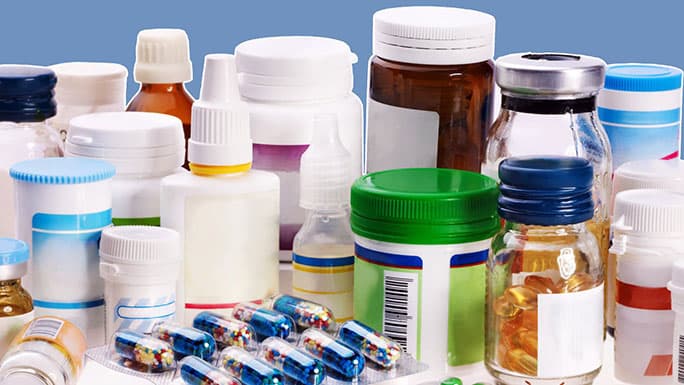Generating enthusiasm for generic drugs with a project called IMPROVE

Generic drugs are virtually identical to their brand-name counterparts. They contain the same active ingredients, dosage form, strength, quality, safety, performance, route of administration, and use. The United States Food and Drug Association (FDA) describes generic drugs as "bioequivalent."
There is, however, one clear difference: generics are much less expensive. The Generic Pharmaceutical Association estimates that generic drugs reduced health care costs by $254 billion in 2014. That's almost $1,000 per person in the United States. The price of branded drugs, they note, has almost doubled since 2008, while the average price of generics, low to begin with, has been cut almost in half in the same time period.
Ironically, reduced prices may make generics more effective. Multiple studies have found that the lower cost of generics can increase patient adherence, which leads to better health outcomes.
A recent study from IMS Health concluded that generics could save billions more. "Even small incremental increases in the rate of generic dispensing are estimated to have important economic implications for both patients and payers," according to guidelines from the American College of Physicians.
But these un-branded lower-cost drugs have a stubborn image problem. Because they cost less, many patients fear they might be substandard. More distressing, about one out of four physicians shares those suspicions. These physicians do not, themselves, use generics. They don't suggest them to family members. One out of three doctors will provide brand-name drugs to patients who ask for them. Highly specialized physicians, many of whom have accepted food or gifts from pharmaceutical companies, also tend to prefer brand-name drugs.
The FDA wants to help change that line of thinking, so they tapped two teams at the University of Chicago-the Pritzker School of Medicine and the Booth School of Business-to conduct a three-year study with a $750,000 grant. The researchers will focus on how to persuade clinicians who hold out for brand names to consider prescribing generic drugs.
"We were a bit of a dark horse," notes principal investigator Vineet Arora, MD, associate professor of medicine and director of clinical learning environment innovation for the medical center. "But FDA awarded us the grant. We were one of only two groups in the nation to get FDA funding to study this issue."
Her project is called IMPROVE, short for Identifying Messages that PROmote the Value and Education of generic prescribing. It concentrates on three groups of commonly used medications: cholesterol-lowering drugs, antidepressants, and oral contraceptives. The project is aimed at two large groups who write a lot of prescriptions, primary care physicians and nurse practitioners.
Cholesterol-lowering drugs, such as the statins, are one of the most widely prescribed medications in the world. Most are available in generic forms for around $12 a month. Patients can purchase a month's worth of generic simvastatin at Walmart for $7.28, for example, or pay $263.72 for Crestor (rosuvastatin, no generic). Some other brand-name versions can cost up to $500 a month. This leads to almost $6 billion in excess yearly spending.
Similarly, oral contraceptives cost less than $100 a year for generics while some branded birth control pills cost $1,000. Antidepressants are prescribed for 14 percent of patients over age 65, but about 40 percent of those patients stop taking them because of the cost.
"Ours is essentially a marketing-research project," Arora said. "We want to find better ways to convey the advantages of generics to the people who write and fill prescriptions. Our goal is to change their negative perceptions about generic drugs."
To reach those populations, Arora's team established partnerships with key target audiences: the American College of Physicians (ACP), the largest medical-specialty organization, and, at 141,000 members, the second-largest physician group in the United States; and the American Association of Nurse Practitioners (AANP), which represents the interests of the approximately 205,000 nurse practitioners (NPs) around the country.
Arora's team is setting up focus groups at the national meetings for both groups, to learn how doctors and NPs make decisions about the use of generics. The information they gather will help them develop and test concise messages designed to shift allegiances away from brand-name and toward bioequivalent generic medications. They will subsequently test those messages with additional physicians and NPs.
The key to success in this project "is our innovative group of partners," Arora said. There are 14 investigators, including physicians, scientists, economists, nurses, and pharmacists from the University of Chicago, the University of California at San Francisco and the Harvard University medical system, health informatics experts from Clinovations Government+Health, as well as representatives from Costs of Care, a not-for-profit organization created to help physicians understand how their decisions influence the cost of a patient's care. The ACP and the AANP will be essential in connecting the research teams with their target audiences.
Many of the innovative aspects of this project also involve specialists in marketing, an unusual component for medical research, from the University of Chicago's Booth School of Business.
"The marketing specialists bring a different skill set and perspective to our project," Arora said. "We hope they can help those of us in health care understand how primary care physicians and nurse practitioners approach decisions about prescribing drugs. Then they can help us develop and test effective messages that will encourage the use of generic drugs wherever appropriate."

